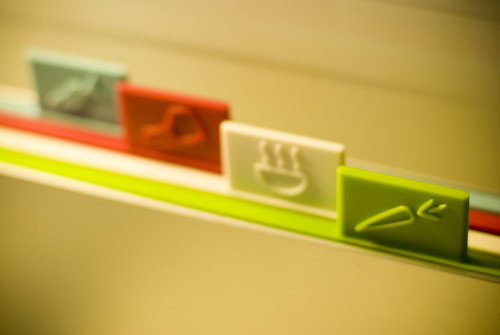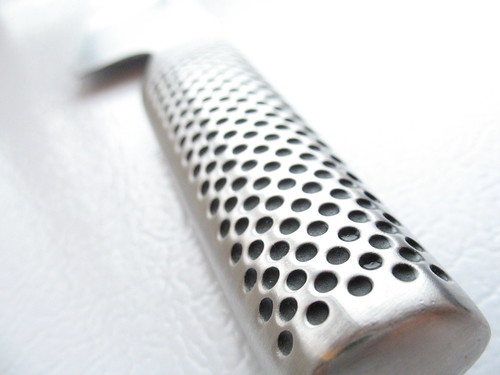The dish I chose for my representation of Italy's cuisine is appropriately from Jamie's Italy
First things first, the meats needed to be marinaded. I cubed my beef, cut up my thick slices of pancetta and cut the Italian sausages into thirds by twisting them and then snipping in between each section. The marinade consisted of sage leaves, garlic, lemon zest, lemon juice, salt, pepper and olive oil. Once all of those ingredients are mashed up in a mortar and pestle
If you can find rosemary skewers, they are certainly a special treat, but if you can't, you can also use metal or wooden skewers available in most grocery stores. I happened to find rosemary skewers so I was psyched to use them for the added flavor. After you strip the skewers of all the rosemary except for a few fronds at the top (and save it for another recipe), use a knife to kind of whittle away the bark of the skewer, and form a point on the end of each as well.
While my oven was preheating to the highest temperature, I started building my kabobs: pancetta, sage leaf, sausage, beef, and continue that way until your skewer is full. When you've completed either all your skewers, or finished off the marinated meat (whichever comes first), it's time for them to go in the oven. Right before that, turn the oven down to 400 degrees so that as the oven cools, it continues to roast the kabobs.
After 20 minutes, your kabobs should be juicy, fragrant and best of all, ready to eat! You can squeeze some lemon juice on top before serving. I made a quick polenta, loaded with parmesan and a little bit of butter, as a bed for the kabobs. Each bite, with a bit of meat, a bit of sage and a bit of polenta was hearty and decadent. Rustic Italian cuisine at it's best!












